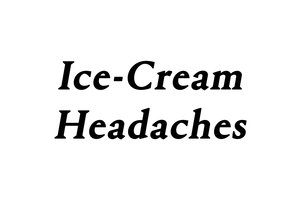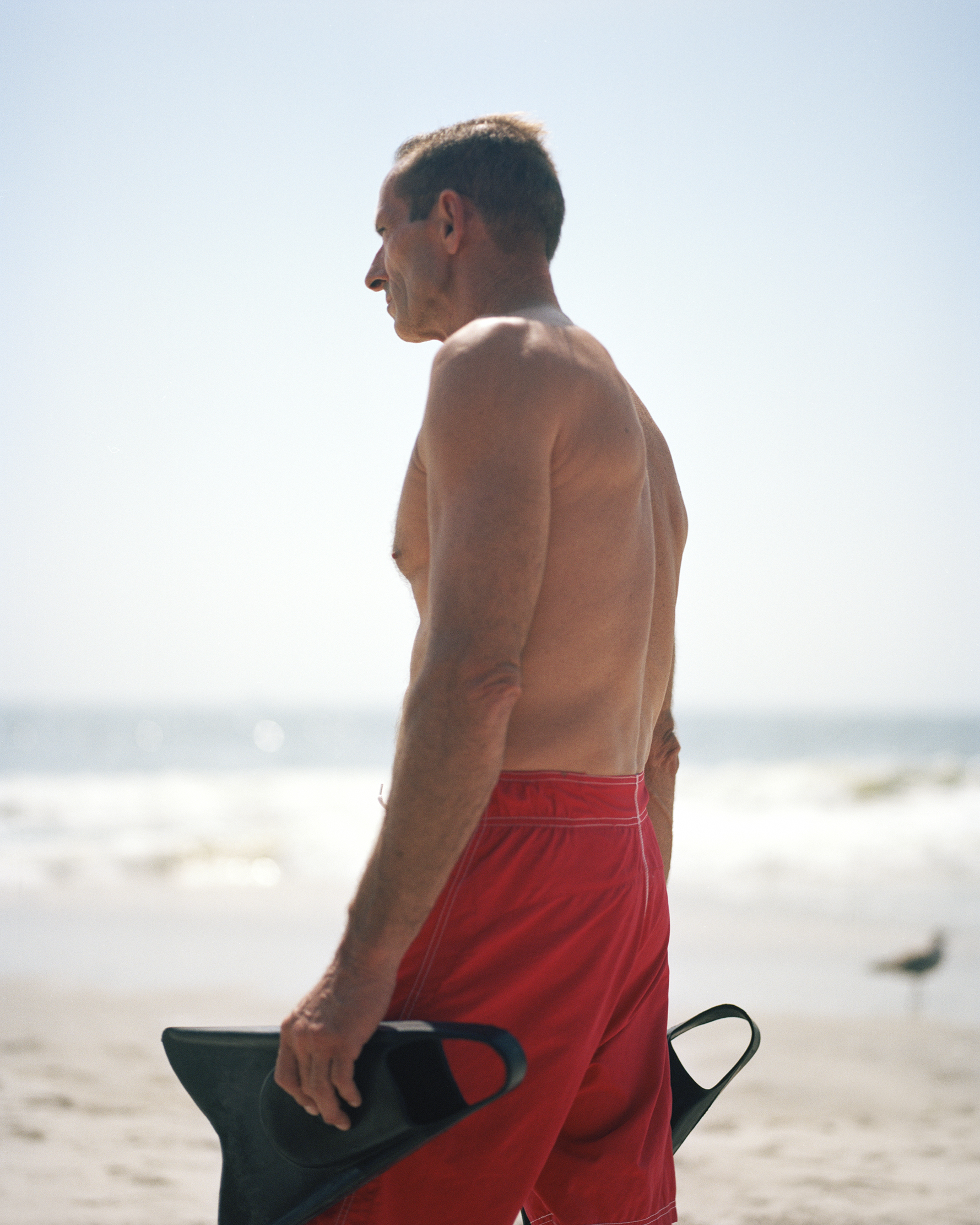Twice recently lifeguards in Long Beach and Rockaway asked one of the best swimmers on earth to get out of the ocean in case he drowned.
Mark Cunningham has spent the last 20 years working as a lifeguard in Hawaii and is recognized as a world champion bodysurfer. He’s literally in the business of not drowning and his precise expertise lies in un-drowning other people.
Mark was in New York partly on vacation and partly for two screenings of the movie Dirty Old Wedge, a new homage to the simple art of body surfing (surfing without any kind of craft, using only the body and swim fins).
The film is focused on the crew of body surfers that first surfed a Southern California wave called The Wedge, known for its almost comically un-make-able close-out waves. When it’s maxing, The Wedge delivers a vertical wall of waveface often over 40 feet high right onto the beach. It breaks more bones and even spines than anyone cares to count and while Pipeline is often cited as the world’s most deadly wave, statistically speaking, you are much more likely to get hurt at The Wedge. Especially if you’re attached to a surfboard. Nonetheless, it’s a body-surfer’s dream - steep, hollow, powerful and about as visually dramatic as things get, pulling huge crowds to the beach every time it goes off.
We caught up with Mark while he was sharing some body-surfing tips on a late summer day on Long Beach and later on over the phone. “While I was in New York I got kicked out of the water twice,” Mark laughed. “Once was at 6pm when the lifeguards got off duty. Apparently it’s ok for surfers but not body surfers. The very next day on Long Beach they kicked me out of the water again - they think it’s too dangerous.” In Hawaii the rules are little more geared towards use of the ocean: “You swim at your own risk,” Mark explained. “Maybe a little more education is needed. Anyway, I enjoyed it!”
Mark loves visiting New York, although he told us he’s not a city person, sometimes overwhelmed by the pace. Nonetheless, he told us that he’s envious New Yorkers get the best of both worlds - the endless diversity of the city and the powerful Atlantic close by.
Body surfing as a discipline doesn’t have a global competitive structure like surfing, but it does have a core following and, like anything, ‘who does it best’ is fun to try and figure out. “The term ‘bodysurfing contest’ is an oxymoron,” Mark said. “It should be free and fun and non-judgemental, but a contest is an opportunity for everyone to get together. There is a big annual contest in Oceanside, California,” Mark told us. “They call it the World Bodysurfing Championships which is a bit of a stretch. It’s a great gathering of the tribe, mostly California surfers. I don’t really ‘compete’ but I do participate.” We asked him what he likes about the event, and Mark explained: “They clear the lineup and it’s just you and 3 others, so that can be a bit of a treat.”
Mark has established a reputation as one of the best body surfers in the world; but without a formal competitive structure to recognize and publicize it, this achievement is even more unique. We asked Mark what kept him focused on bodysurfing above other surfing disciplines. “I’m a really shitty board surfer,” he laughed. “Most of us like to participate in what we’re good at. I’m lucky here in Hawaii - we don’t have to wrestle into a wetsuit. There are great beaches for bodysurfing never more than 45 minutes away and it worked hand in hand with my lifeguarding career: using the waves and currents is essential in my work.” He continued, “I think people expect me to be there with my fins - if they saw me being a kook they would be vastly disappointed. Let’s not blow the myth!”
Mark has dedicated many years to body surfing Pipeline, the North Shore’s crown jewel. We asked him what makes a good body surfing wave. “I like longer rides. For top-to-bottom close-out whomping, there's The Wedge or the Waimea shorebreak. That’s fun and a discipline unto itself, but there’s also bodysurfing where you’re riding top to bottom, stalling and getting a longer ride before it closes out. I like those longer peeling point waves. At 61 years old I don’t want to surf waves that might hurt me - my heroes are the guys older than me still paddling out!”
Having only body-surfed intermittently, we wanted to understand what it’s actually like at Pipeline. “It’s like body surfing at Rockaway,” Mark explained, “but twenty times the size. It’s a much bigger playing field. There are no jetties or boundaries, so it’s this wide open space. It’s the most famous wave in the world, so at times it’s the most crowded wave in the world. You have to be present to get it good. The magazines always show it 6-10 ft with perfect winds, but there are a lot of options. There’s a lot of water moving out there, so I’m very particular about what I want to catch to give me a good ride and not annihilate me. It’s a good challenge and I still enjoy it!”
Mark has dedicated most of his career to being in and around the ocean, so environmental activism has been a natural extension of his work. He’s involved with the 5 Gyres organization and the Plastic Pollution Coalition among others. “To anyone who reads this, every surfer or anyone who enjoys the beach or the ocean,” Mark said, “you must be a dues-paying member of an environmental organization, whether it’s Surf Rider or Greenpeace, or one of so many other groups working against this stuff entering our water. The ocean is our breadbasket and we have to be aware of what we put into it.”
Mark comes across as a man at peace with himself: wise, happy, humble, and open minded. It felt fitting to ask him what advice he’s been given over the years that’s stuck with him. “I wish I could give you a great quote: Lord knows, at my age I’ve been given enough advice,” he laughed again. “I think I’ve heard this attributed to Woody Allen, but 95% of success is showing up. I lifeguarded at Pipeline and I showed up 40 hours a week and I’ve lived in a beach house and I think I’ve led a rich and rewarding life. I feel very fortunate. I knew I was taking on a vow of poverty when I signed up to be a lifeguard, but the pleasure and satisfaction and friendships and experiences I’ve had are unfathomable. So I showed up. I feel very lucky to have had this opportunity.”
Mark paused, thinking for a moment before going on: “The other thing is balance. We’re all trying to find a balance in our lives: trying to pay the bills, trying to make our souls happy, to make our heart happy, our body happy, our partner happy. All these options we have in modern life but you have to pick and choose. What do you have to completely ignore because you don’t have time? I guess the analogy is like surfing. Find the balance that floats your board and keeps all those dependent on you above water too. You’re constantly balancing, trying to find the perfect trim. Trying not to get clobbered and not pearl dive. There are times when you want to share it with a friend and times when you need solitude, to be by yourself.”



